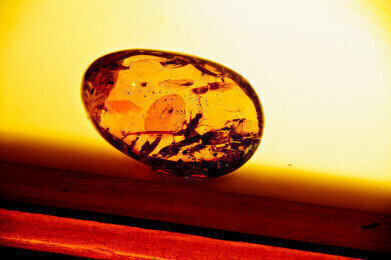News & Views
What Can Fossilised Animals and Insects Teach Us?
Mar 09 2016
Humans are intrinsically fascinated by the past. After all, it offers us a glimpse into who we are, where we came from and how we got here. So when new fossils are discovered, scientists are understandably excited. A 99-million-year old lizard encased in amber is the latest find to spark interest within the scientific sphere, with specialists asserting that it could hold clues to better understanding ‘lost ecosystems’ that existed millions of years ago.
From ancient Myanmar to modern America
Found in Myanmar, the fossil is 75 million years older than all other previous tropical lizard discoveries. This makes it the oldest known chameleon specimen of its kind, and has been hailed as a ‘missing link’ by researchers at Florida’s Museum of Natural History.
“It was incredibly exciting to see these animals for the first time,” comments Edward Stanley, a member of the in-house reptile research team. “It was exciting and startling, actually, how well they were preserved.”
Frozen in time
According to the scientists, the lizard was just an infant when it was frozen in time by a stream of resin. Its entire body is remarkably well preserved, including its colourful scales and eyes. Using ultra high resolution digital x-ray equipment, the team was able to analyse the lizard and estimate its age, without breaking it free from its amber case.
The missing link?
For the scientific world, the discovery unlocks new information about the ‘lost world’ to which the lizard and its fellow reptiles belonged. According to Stanley, “It’s kind of a missing link.” As well as insight into the past, Stanley and his team believe that the 99-million-year old lizard could help us better understand the world we live in today, and learn more about the creature’s contemporary relatives.
While some scientific discoveries spark interest only with professional researchers, other delight both children and adults alike. The 99-million-year old lizard definitively falls into the latter category. For more information on strategies currently being used to spur new interest in the scientific sphere, ‘Bringing Science back into the Curriculum’ is an insightful article. It looks at the techniques being used to inspire the next generation of scientists, including the use of Microscope Activity Kits from the Royal Microscopical Society. Today, the kits are used by over 40,000 children across the UK.
Image via Flickr Creative Commons. Photo credits: Graeme Churchard
Digital Edition
Lab Asia 31.2 April 2024
April 2024
In This Edition Chromatography Articles - Approaches to troubleshooting an SPE method for the analysis of oligonucleotides (pt i) - High-precision liquid flow processes demand full fluidic c...
View all digital editions
Events
Apr 28 2024 Montreal, Quebec, Canada
May 05 2024 Seville, Spain
InformEx Zone at CPhl North America
May 07 2024 Pennsylvania, PA, USA
May 14 2024 Oklahoma City, OK, USA
May 15 2024 Birmingham, UK


















